Minor dents and dings are a common issue for vehicle owners. Common causes include unexpected traffic bumps, small parking mishaps or tight drive-through spots. Minor dents can negatively affect the appearance and value of your vehicle.
Unlike traditional dent repairs, which can be costly and time-consuming, paintless dent removal offers a quick and affordable alternative to remove minor dents without major paint work.
This guide explains paintless dent removal, how it works, and why it’s a smart choice to restore your car’s body.
What is Paintless Dent Removal?
Paintless Dent Removal is a car body repair technique that fixes minor dents and dings without using body fillers or paint. Instead of hiding the damage, it involves using special tools to repair the damaged panel and restore its original shape. PDR may not be a suitable option if the paint is cracked, chipped, or damaged. In these cases, a traditional body repair involving filler and a full respray will be required to restore the panel properly.
If you want to learn more about types of car dent removal and repair services, feel free to read this blog.
When Can Paintless Dent Removal Be Used?
The paintless dent removal method is often used to repair small to medium-sized dents where the paint is intact. It can repair dents on vehicle doors, side panels, and other flat areas.
PDR may not be the best solution if the paint is cracked or chipped, or the panel is severely stretched or creased. An traditional repair involving filler and respraying would be more appropriate in such cases.
Since PDR relies on the flexibility of the metal and undamaged paintwork, it’s important to have the vehicle assessed by a trained technician to determine the best repair method.
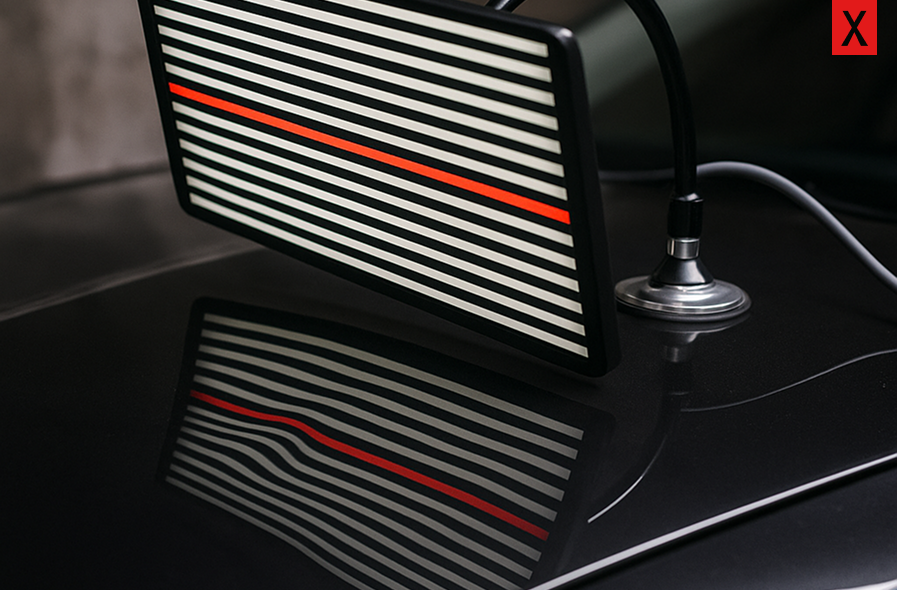
Types of Paintless Dent Removal Techniques
The technician will assess the damaged area to determine if the PDR is suitable and which PDR method would be best for it. There are different PDR methods, like glue pull and push from behind method. The right method depends upon the location, size and severity of the dent.
To carry out the assessment, technicians at the car body shop use special tools like LED lights or reflection boards. It will cast a clear and consistent light pattern across the panel, highlighting every ripple and curve in the metal.
Need Car Body Repair?
Get a free assessment and quote from our certified technicians today!
The shifting lines of light across the dent also make its edges visible, guiding the technician to where the dent is uneven and what is needed to restore the surface.
Based on the type and extent of the dent, the technician decides which PDR technique to use. Here are the most commonly used PDR methods:
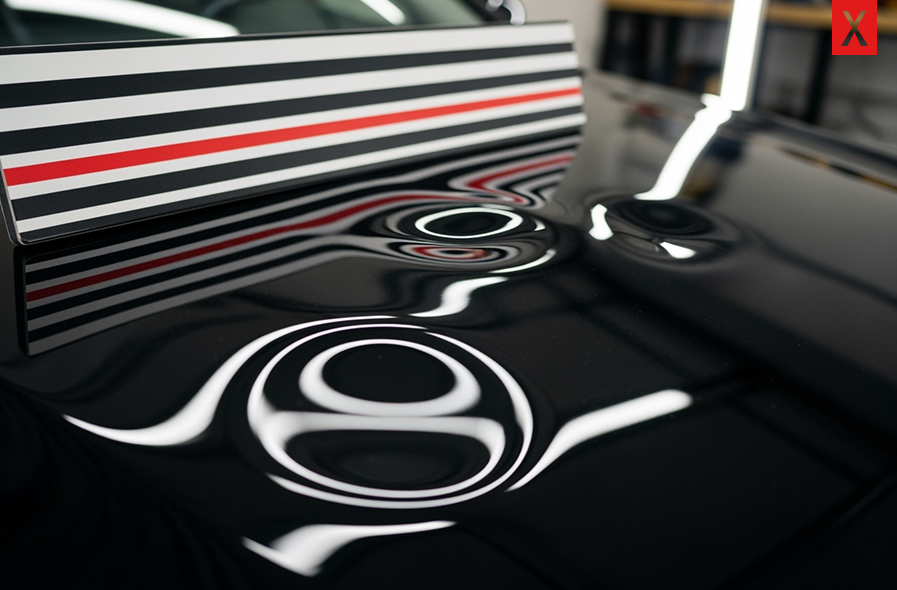
Glue Pull Method
The glue pull method is ideal for dents that can’t be reached from the back. The technician starts the repair by cleaning the damaged areas for proper adhesion. A plastic tab is then hot-glued to the centre of the dent. Once the glue sets, a pulling tool such as a slide hammer or a mini lifter is attached to the tab and used to gently pull the dent outward.
The glue pull method works best on flat surfaces such as doors, bonnets, and roofs. It works effectively on aluminium surfaces as well.
Note: Glue pulling may leave small high spots behind that require tap-down tools to smooth out.
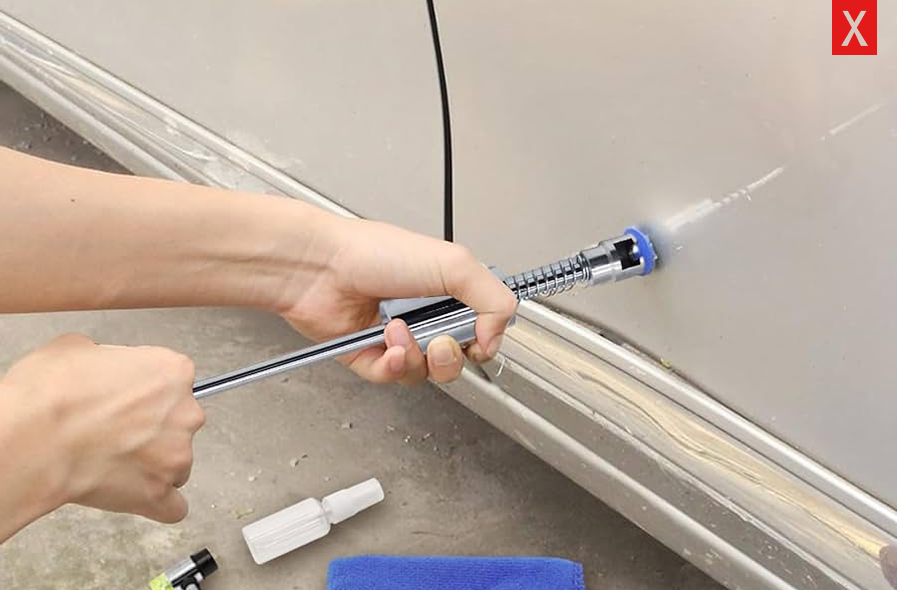
Push-From-Behind Method (Rod or Lever Technique)
If the glue pull method is not practical, a push-from-behind method is often the next best option. This method involves using special levers and rods to access the backside of the panel and gently pushing out the dent using precise and controlled strokes.
To access the back of the dented area, the technician may remove some body trims or other components.
Note: This method may be ineffective on double-skinned panels or dents that cannot be reached from behind.
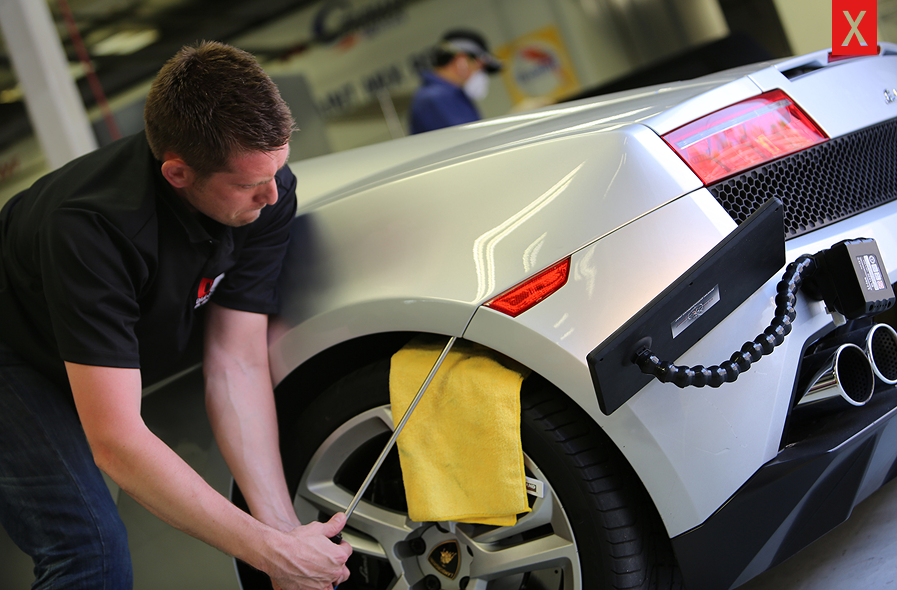
Knockdown or Tap-Down Technique
This method is usually combined with other PDR techniques like Push-From-Behind or Glue Pull. It is not actually about fixing the dent itself. It is used to smooth out the high-spot areas on the panel that may appear while pushing or pulling the dent out.
Get Your Car Looking New Again!
Our skilled team brings your damaged car body back to its original condition expertly.
Think of it more like the final touch-up: once the dent has been removed, the technician grabs a soft-tip hammer and a tap-down tool to smooth out the surface. If performed correctly, this will give you a smooth finish.
Note: This is extremely difficult to perform as one wrong tap could damage the paintwork. That’s why it’s only performed by highly experienced technicians.
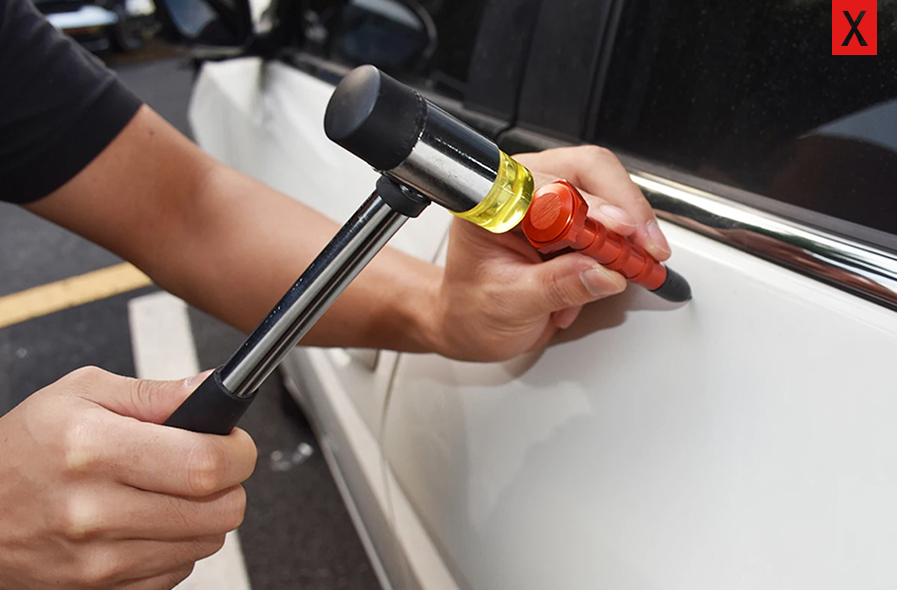
Blending Technique
It is a finishing method used in PDR to smooth out the entire panel after removing the main dent. It helps blend the area with the rest of the panel to give it a smooth look.
A small blending hammer is used with LED lights or a reflection board. The technician then starts aligning the reflection and lights by gently tapping the area. Instead of directly hitting the dents, the technician taps around the dent to release any tension in the panel and let it pop back to its original shape.
Note: Blending isn’t very effective on curved surfaces where the metal reacts differently to tapping.
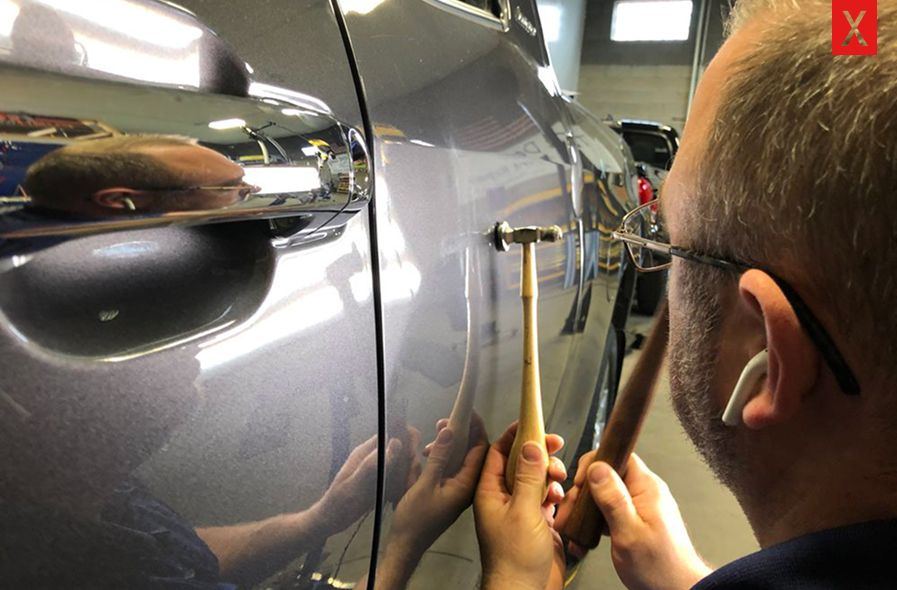
Cold/Heat Technique
This PDR method uses heat and cold to fix the dent.
First, the damaged area is heated with a heat gun to expand the metal. Next, the technician uses a blast of compressed air or dry ice to cool the same spot, causing the metal to contract quickly. At times, this sudden temperature shift allows the dent to flex back to its original shape.
Note: This method is mostly used on small and shallow dents. However, it’s not always effective, as there is no guarantee that the dent will disappear entirely.
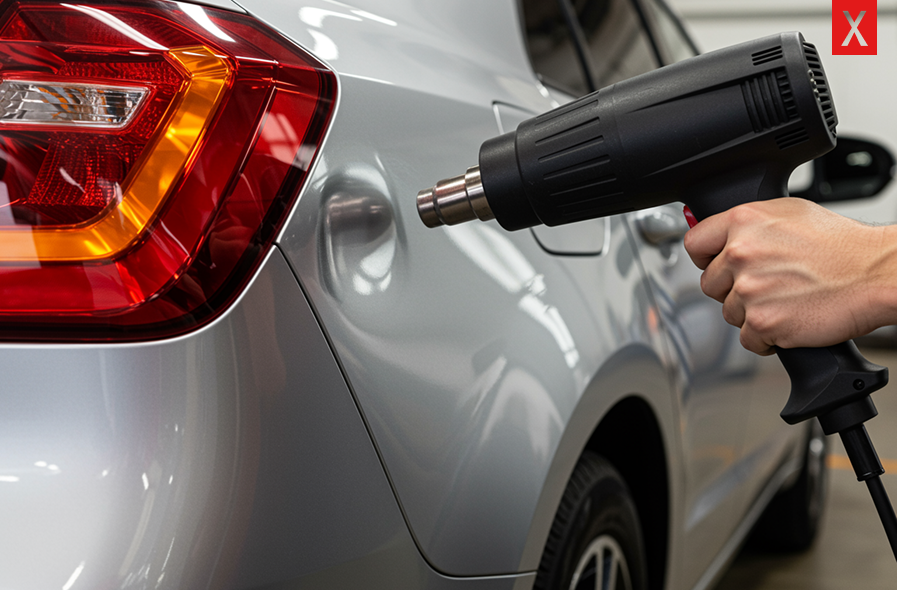
Comparison Table
Method | Access Required | Paint Safe | DIY Friendly | Typical Use |
Glue Pull | No | Yes | Yes | Flat, visible dents |
Push-from-Behind | Yes | Yes | Moderate | Small dents with rear access |
Tap-Down | No | Yes | Moderate | Finishing, fixing high spots |
Blending | No | Yes | No | Shallow, wide dents |
Heat/Cold | No | Sometimes | Yes | Small, shallow dents (DIY) |
Book Your Repair Today!
Your car deserves the best care. Book your car body repair now and enjoy fast, reliable service.
Conclusion
Paint dent removal could be a smart choice for minor to medium sized dents. A professional auto repair shop leaves no sign that the dent was ever there. It will not only save you money and time but it will save the vehicle’s resale value as well.
The quality of paintless dent removal service depends heavily on the technician’s experience and skill level. That’s why it’s important to choose a reliable car body shop that delivers high-quality repairs with experienced technicians who know how to restore your car to its factory condition.
Read more: How to Select a Reliable Car Body Repair Service in London.
Frequently Asked Questions
Yes, PDR is a cost-effective but durable solution. However, it’s only effective for minor damage where the paint is intact.
Dents with severe metal deformation or in challenging locations like edges of panels or body lines are the most difficult to remove with PDR.
PDR is usually a quick method and takes a few minutes to hours, depending on the damage.
Contact AVX Car Repairs for High-Quality Services
At AVX repairs, we have skilled technicians who can deliver the best possible results. With years of hands-on experience and the right tools, we promise to restore your car to its original condition.
Feel free to call us at 01708 933 934 or submit your form request on our contact page!



